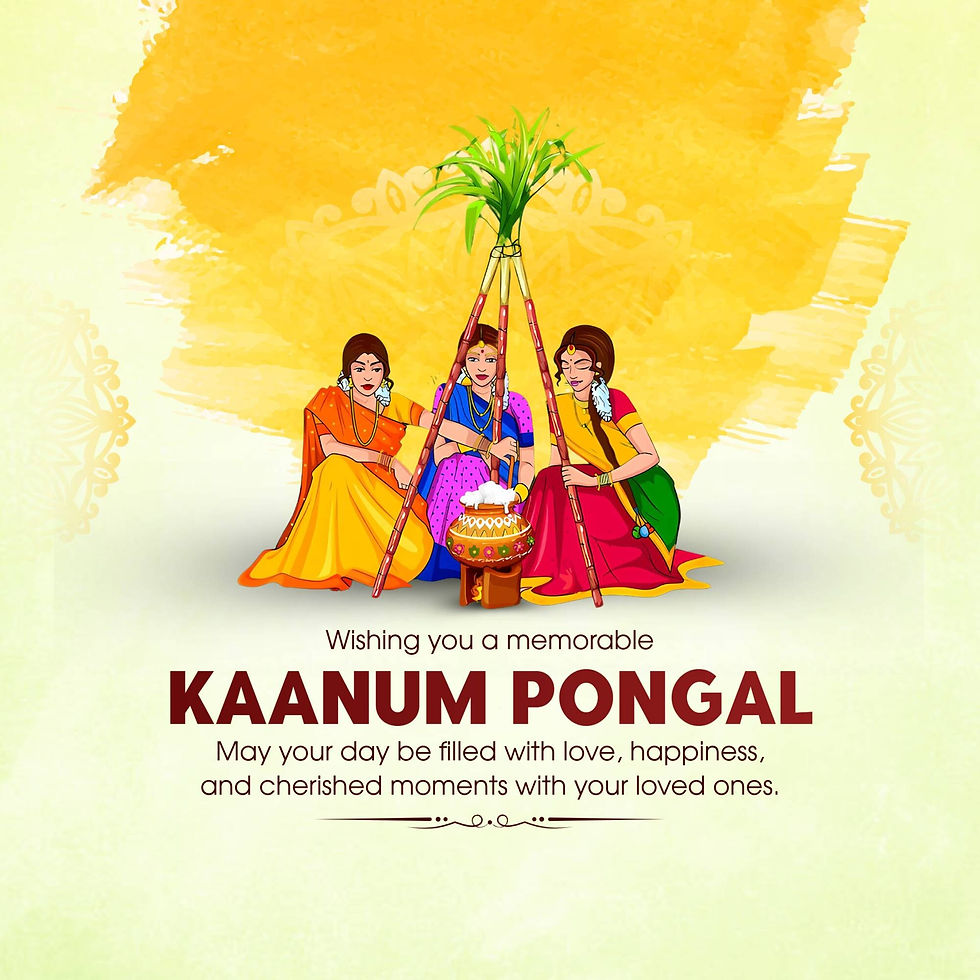
While people widely observe holidays like "Diwali" with joy and celebration, "Makar Sankranti" holds significant cultural, historical, and spiritual value, further amplified by the enormous diversity it embodies in a nation rich in diversity
Different Sankranti Names in India
Nearly every region in India celebrates Sankranti with a different name
Maghi Sankrant (Haryana and Maharashtra)
Uttarayan (Gujarat)
Lohri (Punjab)
Suggi Habba (Karnataka)
Pongal or Thai Pongal (Tamil Nadu)
Khichdi Parv (UP and Bihar)
Magh Bihu/Bhogali (Assam)
For what reason is Makar Sankranti observed?
The sun's movement into the zodiac sign of Makara (Capricorn) on Makar Sankranti marks the end of winter and the onset of longer and warmer days. It is "Angarki Chaturthi" - a very unfortunate day if the Sankranti Chaturthi coincides with a Tuesday.
The majority of the festivals in the Hindu calendar are governed by the lunar cycle, whereas Makara Sankranti is the only festival celebrated based on solar cycles in India. This, therefore, rarely occurs on a date other than one day difference and normally coincides with the same Gregorian date, which is January 14.
General Rituals of Makar Sankranti
Flying kites: During the day, the sky is a riot of color and, at night, with sky lanterns.
"Bhogi" in Andhra Pradesh, "Lohri" in Punjab, and "Meji" in Assam are folk songs and dances around bonfires.
The Ganga, Yamuna, Godavari, Krishna, and Kaveri are some of the sacred rivers where people bath. This is believed to cleanse them of past sins.
Worshiping the Sun god, who is considered an embodiment of wisdom and godliness, for prosperity and riches.
They organize some of the largest fairs on earth, such as the Mahara Mela, Gangasagar Mela, and Kumbha Mela.
1. Maharashtra
As a token of good will, people in Maharashtra exchange til-gud to celebrate Makara Sankranti. People greet each other with, "तिळगुळ घ्या, आणि गोड-गोड बोला. The base idea is amicably resolving disputes, forgive and forget all the past wrongdoing, and maintain friendship. The women also join together for an exclusive 'Haldi-Kumkum' ceremony.
2. Gujarat
In Gujarat, Makar Sankranti is called Uttarayan for two days and was a festival to bring together people for kite flying. The first day is more focused on flying the kites by families; there are exclaims like "kaypo chhe" meaning "I have cut your kite." Vasi-Uttarayan represents a more relaxed continuation of flying kites on the second day. Celebrations also involve the preparation of traditional food preparations, such as Undhiyu - a spicy vegetable stew - and Chikkis - sweets made from jaggery, peanuts, and sesame. Uttarayan is something of a very joyous occasion within Gujarat, as people gather on their rooftops, enjoying the colorful skies and the competitive kite flying.
3. Andhra Pradesh
Andhra Pradesh celebrates Makara Sankranti for three days.
Day 1: Bhogi Panduga, during which people discard their old belongings in the bonfire.
Day 2: Pedda Panduga, or "Big Festival," is celebrated by inviting visitors for feasts, dressing in new attire, and praying. The house's entrance is embellished with "muggu" motifs, which are rangoli patterns that are vibrant with flowers, colors, and "gobbemma," which are little lumps of cow dung that have been hand-pressed.
Day 3: is very significant for farmers as this is Kanuma.
They worship and parade their animals, which are symbols of wealth. In earlier times, cockfighting also used to be performed but has been banned now.
4. Punjab
Makar Sankranti is the festival of colors, dance, and energy in Punjab. Lohri is celebrated on the night before Sankranti or Maghi. The people perform "Giddha," which is a folk dance performed by women, and "Bhangra" which is a folk dance performed by men, and they sing the famous folk song "Sunder mundriye, ho!" with love. They dance in a circle around the flames wearing very colorful clothing. Bartered are salty items such as peanuts, popcorn, and gur rewri. The day after Maghi is the beginning of the farmers' fiscal year.
5. Karnataka
In Karnataka, the women celebrate the festival of Makara Sankranti with "Ellu Bella," that is, the regional specialties made from fresh cut sugarcane, sesame seeds, jaggery, and coconut, with at least ten families as part of a tradition called "Ellu Birodhu." "Ellu bella thindu olle maathadi" is a kannada proverb meaning "eat the mixture of sesame seeds and jaggery and speak only good."
Farmers dress their cows and bulls in vibrant costumes during the "harvest festival" also known as "Suggi." Bulls and farmers jump over fire in a custom known as "Kichchu Haayisuvudu."
6. Kerala
In Kerala, thousands of people flock to witness the Makara Vilakku, or flame atop Ponnambalamedu hill, close to the Sabarimala temple on Makar Sankranti, when the celestial star Makara Jyothi emerges from the sky.
It is believed that Lord Ayyappa Swami blesses his followers by manifesting himself as this celestial lights.
7. Bihar and Jharkhand
In Bihar and Jharkhand, Makar Sankranti is a harvest festival where people bathe in holy rivers or ponds and then consume sweets made from sesame and jaggery. The second day is marked by the preparation of a special dish called Khichdi, which is made from dal and rice accompanied by roasted vegetables and chokha.
On other parts of their geography, however, kite flying can be frequently spotted during the festivities of Makar Sankranti with complete cheer and companionship.
Celebrate this Makar Sankranti by making your celebrations and promotional activities shine with Brands.live! Whether you create festive content or boost sales, Brands.live gives you:
Social Media Tools: Design vibrant Posts, Stories, and Reels to share the festive spirit.
Lead Generation: You can generate interest for seasonal products, such as til-gud and kites.
Social Media Scheduler: Plan and schedule your festive content well in advance.
Business Tools & One-Page Website: Create a personal website for the Makar Sankranti offers.
Marketplace: Reach a wider audience for your seasonal products.
Utilize Brands.live to add a festive touch and drive engagement this season!




Comments